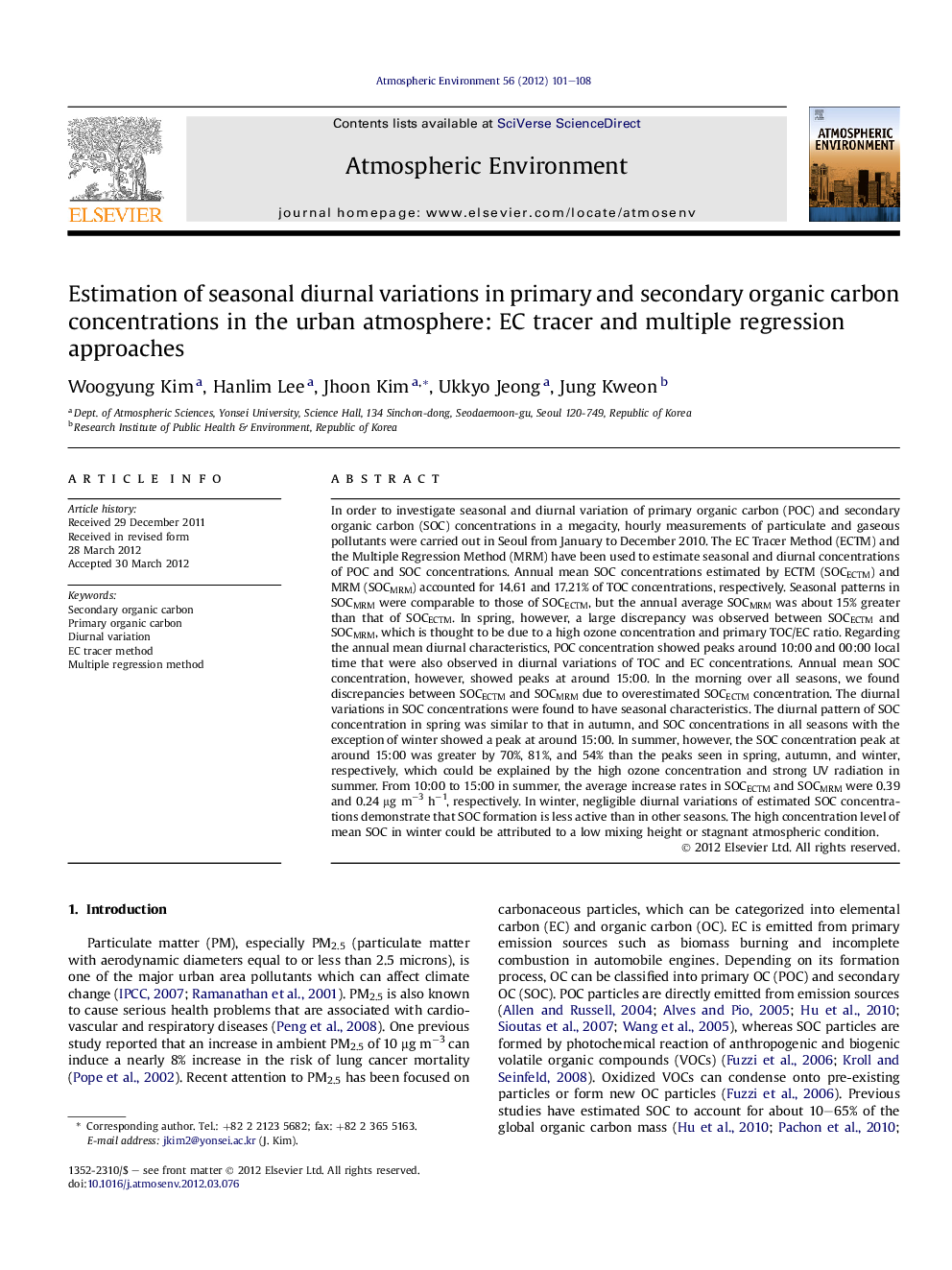| کد مقاله | کد نشریه | سال انتشار | مقاله انگلیسی | نسخه تمام متن |
|---|---|---|---|---|
| 4438720 | 1620415 | 2012 | 8 صفحه PDF | دانلود رایگان |

In order to investigate seasonal and diurnal variation of primary organic carbon (POC) and secondary organic carbon (SOC) concentrations in a megacity, hourly measurements of particulate and gaseous pollutants were carried out in Seoul from January to December 2010. The EC Tracer Method (ECTM) and the Multiple Regression Method (MRM) have been used to estimate seasonal and diurnal concentrations of POC and SOC concentrations. Annual mean SOC concentrations estimated by ECTM (SOCECTM) and MRM (SOCMRM) accounted for 14.61 and 17.21% of TOC concentrations, respectively. Seasonal patterns in SOCMRM were comparable to those of SOCECTM, but the annual average SOCMRM was about 15% greater than that of SOCECTM. In spring, however, a large discrepancy was observed between SOCECTM and SOCMRM, which is thought to be due to a high ozone concentration and primary TOC/EC ratio. Regarding the annual mean diurnal characteristics, POC concentration showed peaks around 10:00 and 00:00 local time that were also observed in diurnal variations of TOC and EC concentrations. Annual mean SOC concentration, however, showed peaks at around 15:00. In the morning over all seasons, we found discrepancies between SOCECTM and SOCMRM due to overestimated SOCECTM concentration. The diurnal variations in SOC concentrations were found to have seasonal characteristics. The diurnal pattern of SOC concentration in spring was similar to that in autumn, and SOC concentrations in all seasons with the exception of winter showed a peak at around 15:00. In summer, however, the SOC concentration peak at around 15:00 was greater by 70%, 81%, and 54% than the peaks seen in spring, autumn, and winter, respectively, which could be explained by the high ozone concentration and strong UV radiation in summer. From 10:00 to 15:00 in summer, the average increase rates in SOCECTM and SOCMRM were 0.39 and 0.24 μg m−3 h−1, respectively. In winter, negligible diurnal variations of estimated SOC concentrations demonstrate that SOC formation is less active than in other seasons. The high concentration level of mean SOC in winter could be attributed to a low mixing height or stagnant atmospheric condition.
► First estimation of diurnal SOC variations was carried out in a megacity site.
► Enhanced SOC concentration was estimated in summer.
► The diurnal variations in SOC concentrations show seasonal characteristics.
► SOC concentrations were peaked at 3:00 PM for all seasons with different magnitudes.
► The results from EC tracer and multiple regression methods show slight discrepancy.
Journal: Atmospheric Environment - Volume 56, September 2012, Pages 101–108